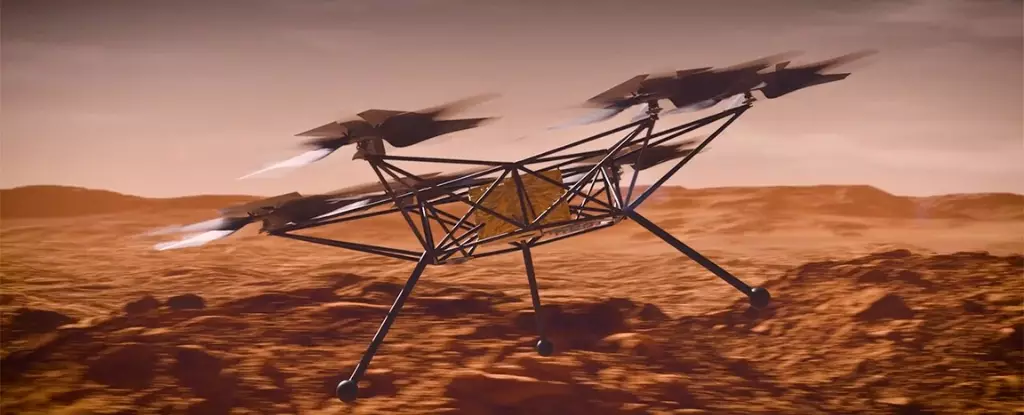The landscape of space exploration is continuously evolving, and NASA’s recent advancements in aerial technology are at the forefront of this transformation. The successful flight of Ingenuity, a small helicopter that performed its maiden voyage on Mars in April 2021, marked a significant milestone in the quest to understand and explore the Red Planet. As we delve into NASA’s upcoming project, the Mars Chopper, we uncover the exciting prospects this next-generation aircraft presents for future exploration missions.
Ingenuity was initially designed as a proof of concept, a technology demonstration that aimed to showcase powered flight in Mars’ challenging atmosphere. With a density of less than 1% compared to Earth’s atmosphere, Ingenuity faced significant challenges during its flights, such as generating adequate lift and coping with Martian dust. Nonetheless, it managed to complete 60 flights, providing critical reconnaissance and mapping of the Martian landscape.
The helicopter showcased the capabilities of flying vehicles in alien environments, unveiling a variety of perspectives on geological features and potential sites of interest for future missions. Ingenuity’s contributions have been invaluable, laying the groundwork for subsequent innovations in aerial exploration on Mars.
Advancing from the successful groundwork laid by Ingenuity, NASA has unveiled a conceptual design for the Mars Chopper. This next-generation aircraft is expected to play a pivotal role in enhancing our understanding of the Martian environment through aerial observations. The Mars Chopper, featuring a larger size comparable to that of an SUV, comes equipped with six rotors, each boasting six blades. This design optimizes lift and increases its payload capacity to five kilograms, allowing it to carry sophisticated scientific instruments for imaging and analysis.
This leap in design represents more than just an increase in carrying capacity; it signifies a broader strategy aimed at facilitating complex exploration tasks. Equipped to scout areas of interest and perform terrain mapping, the Mars Chopper could be a game-changer for scientific inquiry and operational support in human exploration missions.
Operating in an environment as unique as Mars necessitates innovative engineering solutions. The thin atmosphere poses considerable obstacles for any aircraft intending to sustain airborne operations. For the Mars Chopper, the emphasis on generating increased lift is paramount. Scientists and engineers are continually improving rotor designs and propulsion technologies to ensure that aerial vehicles can thrive in such conditions.
Additionally, Martian dust—fine particles that are easily suspended in the atmosphere—poses a threat to delicate apparatuses. The Mars Chopper will therefore need robust protective measures to safeguard its mechanisms from dust harm. These innovations represent a significant advancement in aerospace engineering and reflect NASA’s commitment to overcoming the challenges of extraterrestrial exploration.
The deployment of the Mars Chopper stands to enhance valuable reconnaissance, merging aerial and ground-based observations into a cohesive framework for exploration. While rovers have captured data on the Martian surface, aerial vehicles like the Chopper can arrive at remote locations that may be inaccessible to surface vehicles.
Moreover, the synergy created by integrating aerial and terrestrial exploration methods could yield unprecedented insights into Martian geology and potential biosignatures. As plans for human missions to Mars evolve, the Mars Chopper could serve a pivotal role in scouting terrain and assessing potential landing sites, ultimately laying the foundation for a successful human presence on the planet.
As NASA pushes the boundaries of what is possible in space exploration, the Mars Chopper stands as a testament to human ingenuity and resilience. Building on the achievements of Ingenuity, this new concept symbolizes a robust future for aerial exploration not only on Mars but potentially on other celestial bodies with suitable atmospheres. With each advancement, we move closer to unlocking the secrets of our solar system, driven by the desire to explore new worlds and, ultimately, seek answers to humanity’s profound questions about existence beyond Earth.

